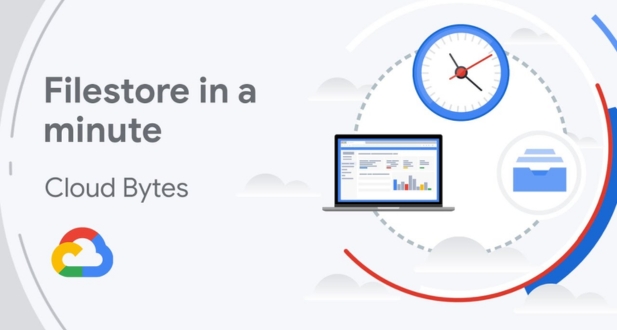Introduction to GCP Cloud Filestore
Definition and Overview
GCP Cloud Filestore is a fully managed file storage service provided by Google Cloud Platform (GCP). It offers a scalable and high-performance solution for storing and sharing files, making it an integral component in cloud-based storage ecosystems.
Cloud Filestore provides a centralized and accessible location for storing files that can be easily shared among users and applications. With its managed service approach, it simplifies file storage management tasks, allowing users to focus on building and deploying applications rather than worrying about infrastructure nuances.
Key Features and Capabilities
Cloud Filestore distinguishes itself with several key features that cater to the evolving needs of cloud-based file storage:
- Scalability:
Cloud Filestore is designed to scale seamlessly based on the storage requirements of applications. This ensures that as data grows, the storage capacity can be expanded effortlessly.
- Performance:
The service offers high-performance file storage, making it suitable for applications that require low-latency access to files. This is crucial for scenarios like media processing, content delivery, and collaborative work environments.
- Managed Services:
Cloud Filestore is fully managed, meaning that Google Cloud takes care of the operational aspects such as hardware maintenance, updates, and security patches. This allows users to focus on utilizing the service rather than managing its infrastructure.
- Support for Standard Protocols:
Cloud Filestore supports standard file system protocols such as Network File System (NFS) and Server Message Block (SMB). This guarantees interoperability with several systems and applications.
- Integration with GCP Ecosystem:
The service seamlessly integrates with other GCP services, facilitating smooth workflows within the Google Cloud environment. This integration is valuable for applications that leverage multiple cloud services.
In essence, GCP Cloud Filestore provides a robust, scalable, and fully managed solution for organizations seeking efficient file storage in the cloud. Whether for enterprise applications, media workflows, or collaborative environments, Cloud Filestore offers the performance and ease of use required in modern cloud-based storage solutions.
Understanding Managed File Storage
Importance of Managed File Storage
In the context of modern cloud architectures, managed file storage plays a crucial role in addressing the evolving needs of businesses and applications. As organizations transition to the cloud, the importance of efficient and scalable file storage becomes evident. Managed file storage services, such as GCP Cloud Filestore, offer several key advantages:
- Simplified Management:
Managed file storage services abstract the complexities of infrastructure management. This simplification allows organizations to focus on leveraging file storage for their applications without the burden of handling underlying hardware, maintenance, and updates.
- Scalability:
The scalability of managed file storage is a significant advantage. Businesses can easily scale their file storage resources based on demand, accommodating the growing volume of data without the need for manual intervention or complex configurations.
- Cost-Efficiency:
Managed file storage services often follow a pay-as-you-go pricing model, providing cost efficiency. Organizations pay for the storage they use, avoiding the upfront costs associated with traditional storage infrastructure.
- Automated Backups and Updates:
Cloud-based file storage solutions typically include automated backup mechanisms and updates. This ensures data durability and keeps the infrastructure up-to-date with the latest features and security patches.
- Global Accessibility:
Managed file storage services often come with features that facilitate global accessibility. This is crucial for distributed teams or applications that require seamless access to files from different geographic locations.
Comparison with Traditional File Storage
Contrasting Cloud Filestore with traditional file storage solutions illuminates the advantages of opting for a managed approach:
- Flexibility and Agility:
Traditional file storage solutions might lack the flexibility to adapt quickly to changing storage needs. Managed file storage services provide agility, allowing organizations to respond promptly to evolving requirements.
- Reduced Maintenance Overhead:
Unlike traditional setups that demand extensive maintenance efforts, managed file storage reduces the operational burden. Cloud providers handle routine tasks, enabling IT teams to allocate resources more strategically.
- Cost Savings:
Traditional file storage often involves substantial upfront costs for hardware and ongoing maintenance. Managed services shift this to a variable expense model, potentially resulting in significant cost savings.
- Integration with Cloud Ecosystem:
Managed file storage services seamlessly integrate with broader cloud ecosystems. This integration is particularly advantageous for organizations leveraging various cloud services in their workflows.
In essence, understanding the importance of managed file storage involves recognizing its role in simplifying operations, enhancing scalability, and aligning with the cost-effective and dynamic nature of cloud computing. Comparing it with traditional approaches emphasizes the transformative benefits that a managed solution brings to the table.
GCP Cloud Filestore Architecture
Filestore Deployment Models
GCP Cloud Filestore provides two primary deployment models: single-zone and multi-zone configurations. Understanding these models is essential for tailoring file storage solutions to specific needs.
- Single-Zone Configuration:
In a single-zone configuration, the file storage is deployed within a single Google Cloud zone. This is suitable for workloads where high availability is not the primary concern, or cost optimization is a priority.
While it offers simplicity and cost-effectiveness, this configuration may not provide the same level of redundancy and fault tolerance as multi-zone setups.
- Multi-Zone Configuration:
Multi-zone configurations are designed for increased availability and durability. In this model, Cloud Filestore deploys file storage across multiple Google Cloud zones within a region.
This configuration ensures that if one zone experiences an outage, the data remains accessible from other zones, contributing to improved resilience and business continuity.
Understanding the trade-offs between these deployment models is crucial for selecting the most suitable configuration based on factors such as workload requirements, availability needs, and cost considerations.
Components and Architecture Overview
The architecture of GCP Cloud Filestore comprises several key components that work together to provide a scalable and reliable managed file storage solution.
- Filestore Instance:
The core component is the Filestore instance, which represents the provisioned file storage. It includes the allocated capacity and performance characteristics based on the chosen service tier.
- NFS (Network File System):
Cloud Filestore uses the NFS protocol, a standard for file sharing between networked devices. NFS facilitates seamless communication between the file storage and the instances accessing the data.
- Google Cloud VPC (Virtual Private Cloud):
Cloud Filestore instances are deployed within a Google Cloud VPC, ensuring network isolation and security. This VPC integration allows for controlled access to the file storage resources.
- Zones and Regions:
Multi-zone configurations leverage multiple Google Cloud zones within a region to enhance availability. This ensures that even if one zone experiences issues, the data remains accessible from other zones.
- High-Performance SSDs:
Filestore instances utilize high-performance SSDs (Solid State Drives) to deliver low-latency and high-throughput access to data. This is crucial for supporting I/O-intensive workloads efficiently.
Understanding the interplay of these components provides insights into how Cloud Filestore achieves the balance between performance, availability, and scalability in its architecture. Whether opting for a single-zone or multi-zone deployment, organizations can tailor their file storage solutions to meet specific application requirements and operational preferences.
Setting Up and Configuring Cloud Filestore
Creating a Cloud Filestore Instance
Setting up a Cloud Filestore instance involves a straightforward process facilitated by the Google Cloud Console. Below is a step-by-step guide on how to create a Cloud Filestore instance:
- Navigate to the Google Cloud Console:
Log in to the Google Cloud Console using your credentials.
- Access the Filestore Section:
In the Console’s left-hand navigation panel, locate the “Filestore” section. Click on it to access the Filestore dashboard.
- Initiate Instance Creation:
Within the Filestore dashboard, find the “Create Instance” button and click on it to start the instance creation process.
- Define Instance Details:
Specify essential details such as the instance name, desired service tier (Standard or Premium), and the capacity of the storage in gigabytes.
- Configure Network Settings:
Choose the appropriate Google Cloud VPC for deploying the Filestore instance. Define network settings and select the desired Google Cloud region and zone.
- Set Access Controls:
Define access controls to regulate which Google Cloud project and Compute Engine instances can connect to the Filestore instance. Fine-tune permissions to align with security requirements.
- Review and Confirm:
Review the configured settings to ensure accuracy. Once satisfied, proceed to create the Cloud Filestore instance.
- Wait for Deployment:
Google Cloud will now deploy the Cloud Filestore instance based on the specified configurations.This could require several minutes to complete..
- Access Instance Details:
Once the deployment is complete, access the details of the created instance, including connection details and status.
Connecting to Cloud Filestore
Connecting applications and compute instances to Cloud Filestore is a crucial step in utilizing the managed file storage. The connection primarily involves using the NFS protocol. Here’s a brief overview of the process:
- Retrieve Connection Details:
From the Cloud Filestore instance details, gather the necessary connection information, including the instance’s IP address and the designated mount path.
- Configure Applications or Compute Instances:
On the client side (applications or Compute Engine instances), configure the NFS client settings. This typically involves editing the /etc/fstab file to add an entry for mounting the Cloud Filestore instance.
- Mount the Filestore Instance:
Use the standard Linux mount command or an equivalent method on the client side to mount the Cloud Filestore instance. This step establishes the connection, and the Filestore storage becomes accessible to the client.
- Verify Connectivity:
Perform checks to ensure that the connection is successful. Verify that the Filestore storage is mounted and accessible from the client, enabling seamless data interaction.
By following these steps, users can effortlessly create a Cloud Filestore instance tailored to their storage requirements and establish robust connections with applications or Compute Engine instances, fostering efficient data management within a Google Cloud environment.
Performance Optimization and Scaling
Performance Considerations
Ensuring optimal performance for Cloud Filestore involves understanding various factors that can influence Input/Output (I/O) operations. Here are key considerations:
- Service Tier Selection:
Choose the appropriate service tier, either Standard or Premium, based on performance requirements. The Premium tier typically offers higher I/O performance.
- Instance Size and Capacity:
The size and capacity of the Cloud Filestore instance play a crucial role in performance. Larger instances with higher capacity can handle more significant workloads and provide better I/O throughput.
- Network Latency:
Minimize network latency by deploying Cloud Filestore instances in regions that are geographically closer to the clients or applications accessing the file storage. This reduces the time taken for data to travel between the client and the Cloud Filestore instance.
- Filesystem Configuration:
Optimize the filesystem configuration on both the Filestore instance and client side. Fine-tune parameters such as block size and caching policies to align with the specific use case and workload.
- I/O Patterns and Workload:
Understand the I/O patterns and workload characteristics of the applications using Cloud Filestore. Adjust configurations based on whether the workload involves predominantly read or write operations.
Scaling Filestore Instances
Scaling Cloud Filestore instances is a flexible process that allows users to adapt to changing storage demands. Consider the following options for scaling:
- Vertical Scaling:
Increase the size and capacity of the existing Cloud Filestore instance vertically. This is suitable for scenarios where additional resources on the same instance can meet growing storage needs.
- Horizontal Scaling:
For scenarios requiring a significant increase in storage capacity or performance, consider horizontal scaling. Create additional Cloud Filestore instances and distribute the workload across multiple instances.
- Automatic Scaling (Premium Tier):
Leverage the automatic scaling feature available in the Premium tier. This allows Cloud Filestore to dynamically adjust resources based on the workload, ensuring optimal performance during peak usage and cost savings during periods of lower demand.
- Monitoring and Scaling Policies:
Implement robust monitoring of Cloud Filestore instances. Define scaling policies based on performance metrics or storage utilization. This ensures proactive scaling to accommodate changing demands.
By carefully considering these performance optimization strategies and scaling options, users can tailor their Cloud Filestore deployment to deliver optimal performance and seamlessly adapt to evolving storage requirements.
Backup and Disaster Recovery
Configuring Filestore Backups
Ensuring the safety and availability of data is paramount in any storage solution. Cloud Filestore provides robust backup capabilities to safeguard against data loss. Here’s how to configure backups:
- Snapshot Functionality:
Cloud Filestore allows users to create snapshots of their file data at a specific point in time. These snapshots serve as backup copies that can be used for recovery in case of data loss or corruption.
- Scheduled Backups:
Implement a scheduled backup strategy to automate the process of creating snapshots regularly. Scheduled backups ensure that the backup copies are up-to-date and can be relied upon for recovery.
- Retention Policies:
Define retention policies for snapshots to manage storage costs effectively. Retention policies determine how long snapshots are kept before they are automatically deleted. This helps in maintaining a balance between data safety and storage efficiency.
- Consistent Snapshots:
Ensure that snapshots are taken during periods of minimal activity to maintain data consistency. Consistent snapshots provide a reliable point-in-time backup that accurately reflects the state of the file data.
Disaster Recovery Planning
Disaster recovery is a critical aspect of data management, and Cloud Filestore offers features to assist in creating effective plans:
- Multi-zone Deployment:
Deploy Cloud Filestore instances across multiple zones to ensure high availability. In the event of a failure in one zone, the data remains accessible from instances in other zones.
- Geo-redundancy:
Consider geo-redundancy by deploying Cloud Filestore instances in different regions. This adds an extra layer of protection against region-wide outages or disasters, ensuring data availability even in extreme scenarios.
- Regular Testing:
Periodically test the disaster recovery process to validate its effectiveness. Conducting drills ensures that the recovery plan works as expected and helps identify any potential issues that may arise during an actual disaster.
- Documentation:
Document the disaster recovery plan comprehensively. Provide roles and duties, contact details, and step-by-step instructions. A well-documented plan ensures a swift and coordinated response during a disaster.
By configuring backups and implementing a robust disaster recovery plan, users can enhance the resilience of their Cloud Filestore deployment, minimize downtime, and safeguard critical data against unforeseen events.
Cost Management and Pricing Model
Understanding the Pricing Model
Effectively managing costs is crucial when utilizing cloud storage solutions like Cloud Filestore. The pricing model for Cloud Filestore is designed to provide flexibility and scalability. Understanding the key components can help users plan their budget:
- Storage Capacity:
The primary cost consideration is the amount of storage capacity allocated for the Filestore instance. Users are billed based on the provisioned storage, allowing them to scale resources according to their needs.
- Network Usage:
Cloud Filestore pricing takes into account the data transfer between the Filestore instance and other Google Cloud services or the internet. Users should be mindful of network usage, especially in scenarios with significant data movement.
- Operation Costs:
Certain operations, such as file system operations (e.g., reads and writes), can incur additional costs. Understanding the frequency and nature of these operations is essential for accurate cost estimation.
Strategies for Cost Optimization
Optimizing costs with Cloud Filestore involves strategic resource management and leveraging the flexibility of the platform:
- Dynamic Scaling:
Adjust the storage capacity based on dynamic requirements. Cloud Filestore allows users to scale storage capacity up or down as needed, providing flexibility to optimize costs during periods of lower demand.
- Monitoring and Alerts:
Set warning and monitoring systems to keep tabs on the use of resources.Setting up alerts for unusual spikes in storage or network usage enables proactive cost management.
- Lifecycle Management:
Regularly review and assess the data stored in Cloud Filestore. Implement lifecycle management strategies, such as archiving or deleting obsolete data, to avoid unnecessary storage costs.
- Optimized Network Configuration:
Optimize network configurations to minimize data transfer costs. Utilize efficient networking practices, such as choosing the right Google Cloud region and optimizing data routes.
- Reserved Capacity:
Explore options for reserved capacity, which may offer cost savings for long-term commitments. Reserved capacity plans can provide predictability in costs for stable workloads.
By gaining a comprehensive understanding of the pricing model and implementing effective cost optimization strategies, users can maximize the value of Cloud Filestore while keeping costs in check.
Future Developments and Updates
Google Cloud’s Commitment to Continuous Improvement
Google Cloud remains committed to continuous improvement, ensuring that Cloud Filestore evolves to meet the dynamic needs of users and the evolving landscape of cloud storage solutions. Google Cloud’s commitment is reflected in:
- Innovative Features:
Expect ongoing innovation with the introduction of new features and functionalities aimed at enhancing the performance, scalability, and overall user experience of Cloud Filestore.
- Optimization Efforts:
Continuous efforts to optimize the underlying infrastructure and technologies supporting Cloud Filestore. Users can anticipate improvements in resource efficiency and operational capabilities.
- Security Enhancements:
Google Cloud places a strong emphasis on security. Future developments may include additional security features and enhancements to ensure the confidentiality and integrity of data stored in Cloud Filestore.
Community Feedback and Contributions
Google Cloud values the input of its user community in shaping the future of Cloud Filestore. The community plays a crucial role in providing valuable insights, identifying areas for improvement, and contributing to the platform’s growth:
- User Feedback Loop:
Google Cloud actively seeks and considers feedback from Cloud Filestore users. The feedback loop helps prioritize feature development, address user concerns, and refine the platform based on real-world use cases.
- Collaborative Development:
Opportunities for community contributions in the form of code, documentation, and best practices. Google Cloud encourages collaboration, fostering an environment where users can actively participate in the improvement of Cloud Filestore.
- Engagement Platforms:
Users can engage with the Cloud Filestore community through forums, discussions, and collaborative platforms. These channels serve as spaces for knowledge sharing, issue resolution, and idea exchange.
As Google Cloud and the user community collaboratively shape the future of Cloud Filestore, users can anticipate a platform that not only meets current requirements but also evolves to address emerging challenges and opportunities in the cloud storage landscape.
Conclusion
In conclusion, GCP Cloud Filestore stands as a robust and scalable solution, offering managed file storage for a diverse range of applications and workloads. Throughout this comprehensive exploration, we’ve delved into the foundational aspects, architecture, deployment, and optimization strategies of Cloud Filestore.
Cloud Filestore’s architecture, with its deployment models and components, provides users with flexibility and choice, allowing them to tailor their file storage solutions to specific needs. The platform’s user-friendly setup and configuration processes enable seamless integration into existing environments, while its support for protocols like NFS ensures compatibility with a variety of applications.
As organizations navigate the ever-evolving landscape of cloud storage, Cloud Filestore emerges as a strategic choice, providing not only performance optimization and scaling capabilities but also robust features for backup, disaster recovery, and security. The emphasis on cost management and the transparent pricing model further enhances its appeal, allowing users to align resource allocation with usage patterns and budget considerations.
Looking ahead, Google Cloud’s commitment to continuous improvement ensures that Cloud Filestore will remain at the forefront of innovation. Anticipated future developments include innovative features, optimization efforts, and enhanced security measures. The platform’s reliance on community feedback underscores the collaborative nature of its evolution, providing users with a voice in shaping the roadmap and contributing to the platform’s success.
In adopting GCP Cloud Filestore, organizations not only gain access to a state-of-the-art managed file storage solution but also become part of a dynamic and engaged community, collectively driving the platform towards greater heights of performance, reliability, and user satisfaction.









